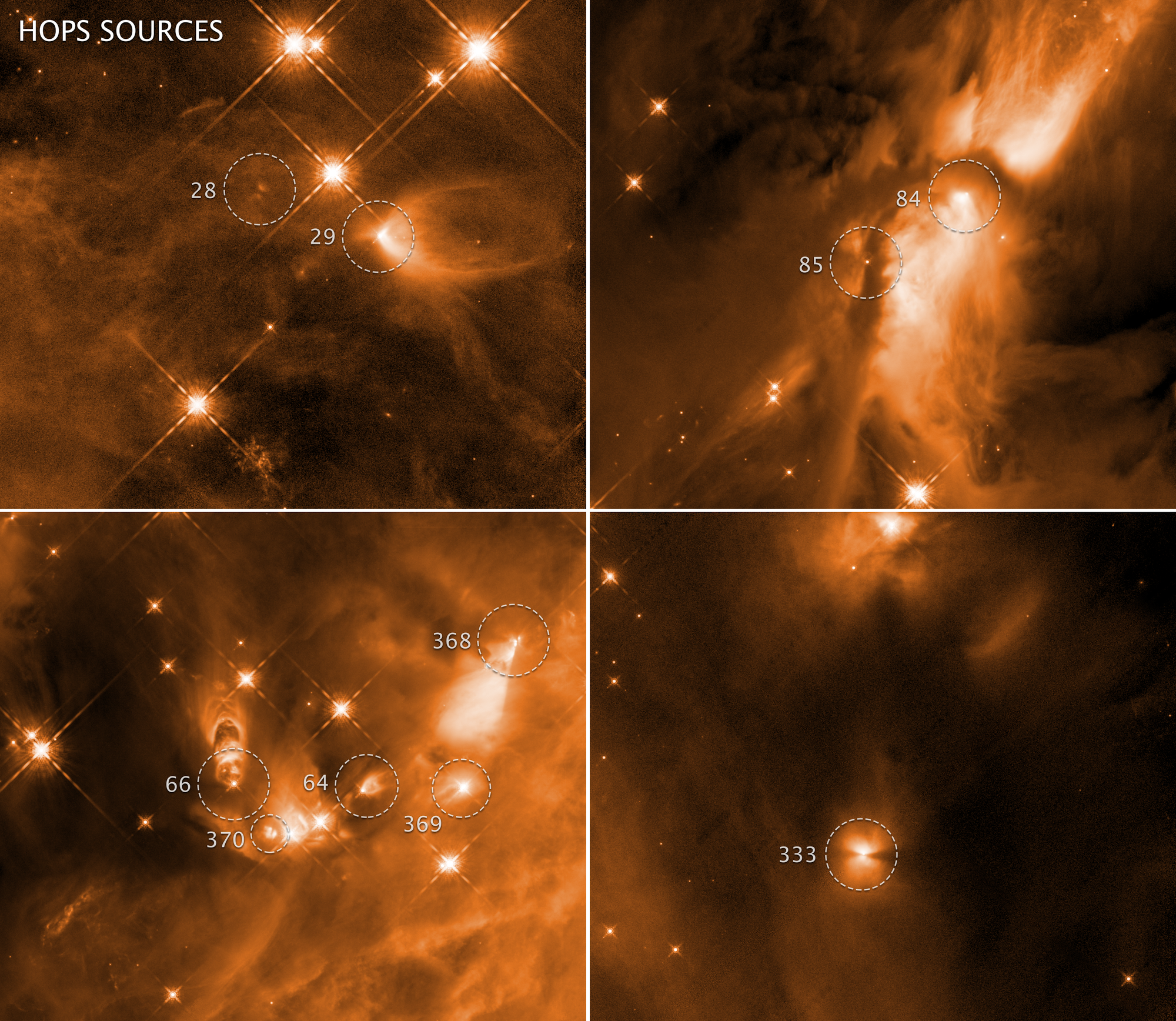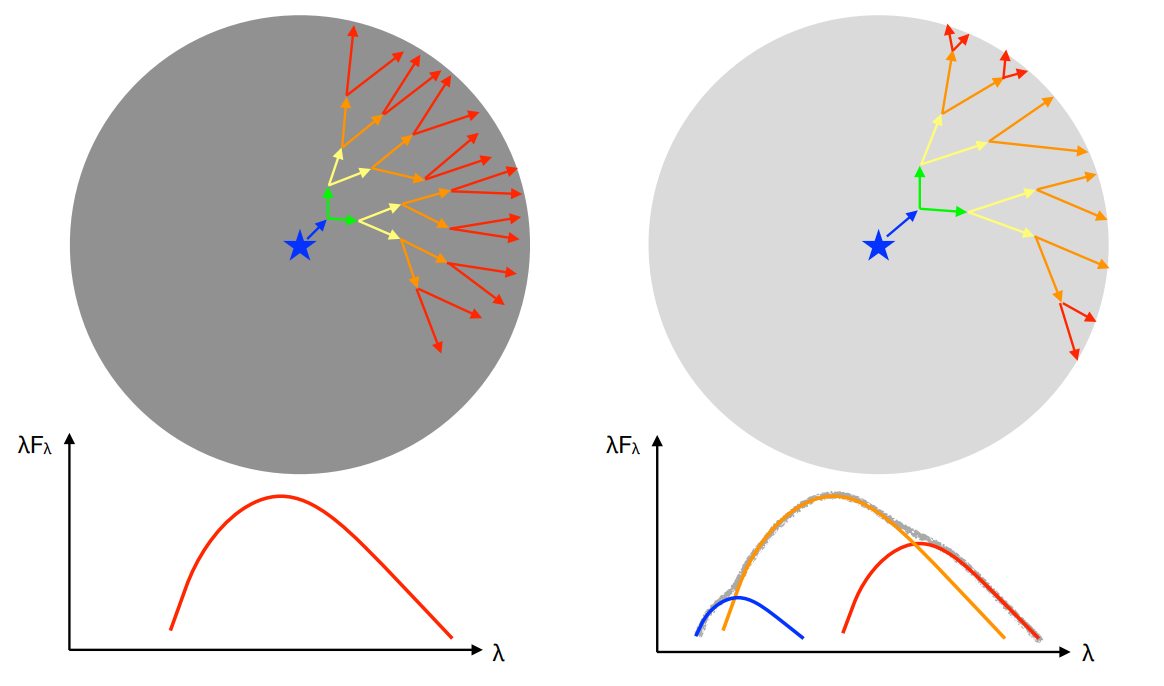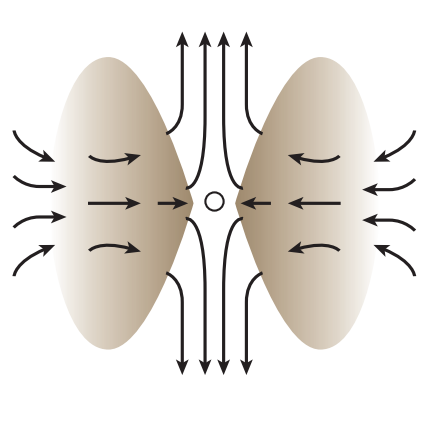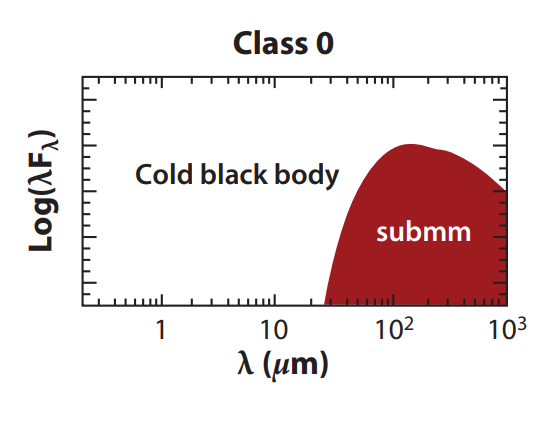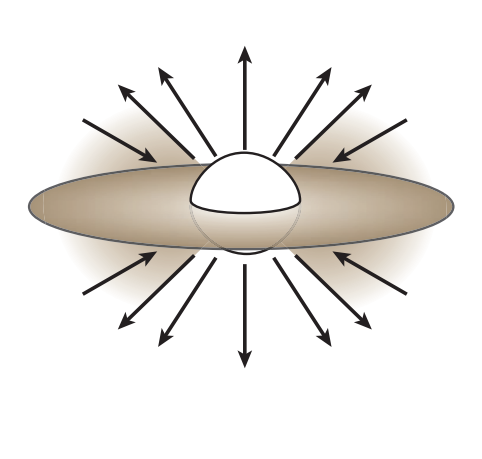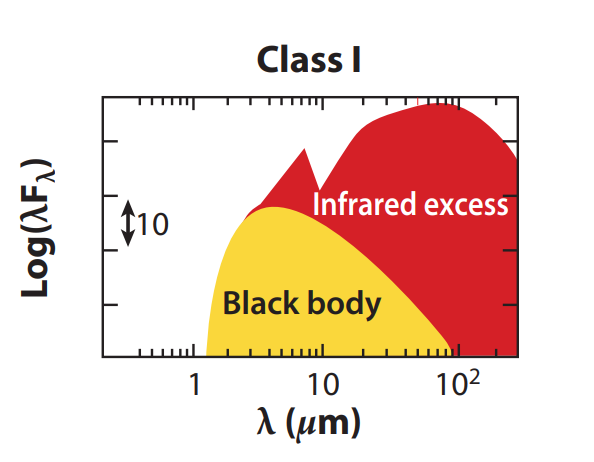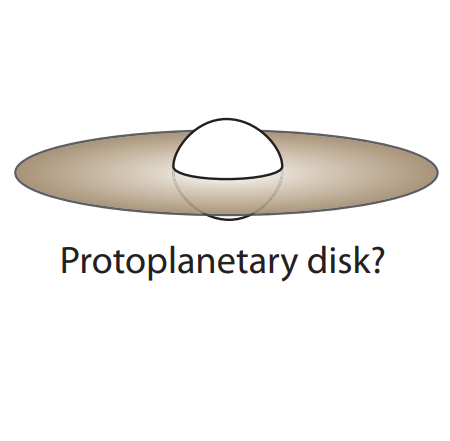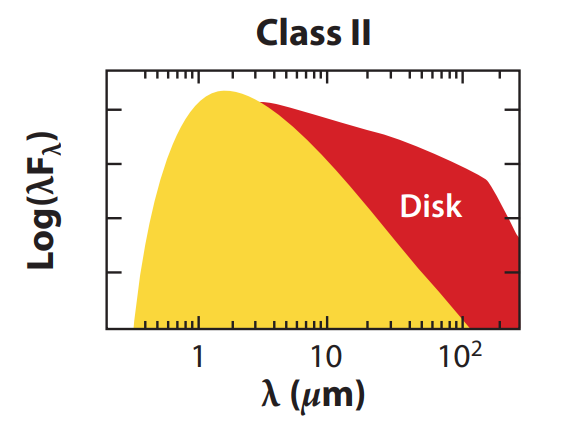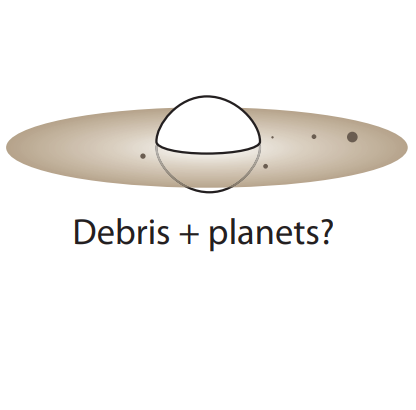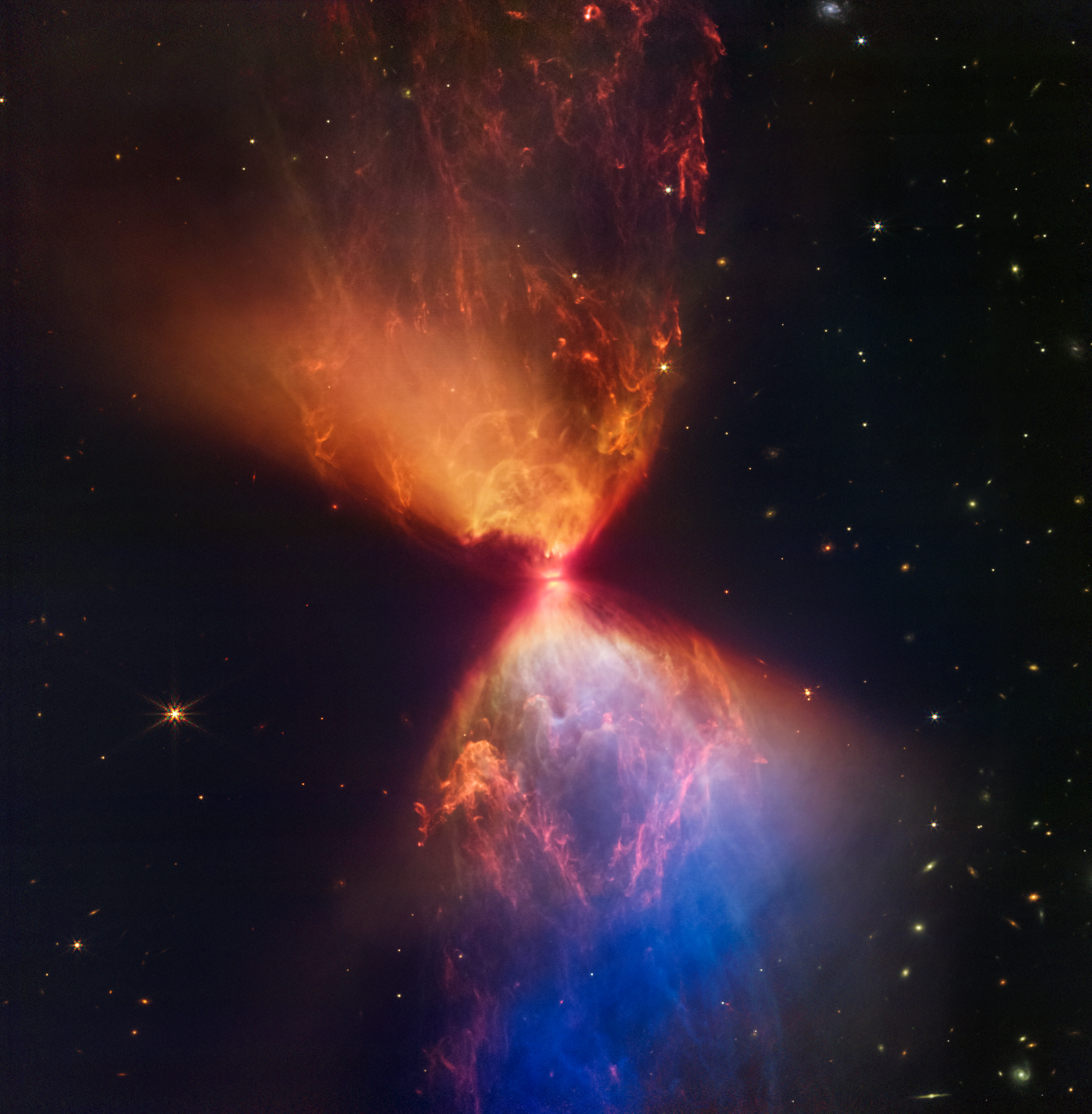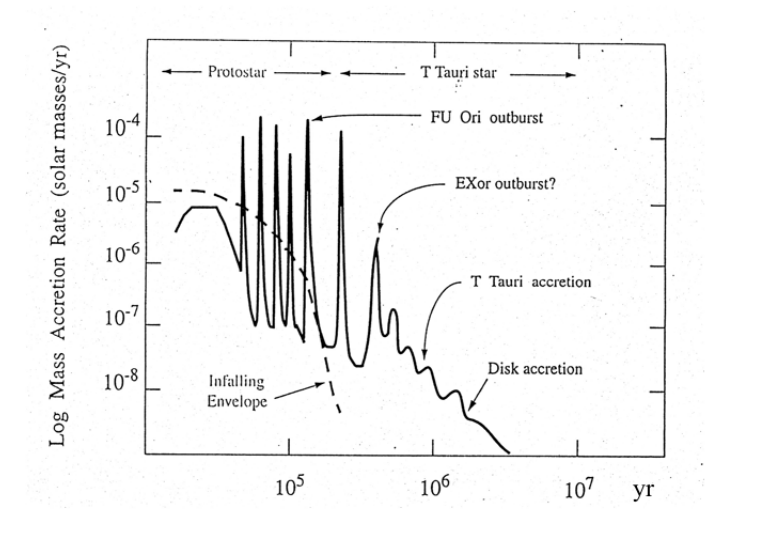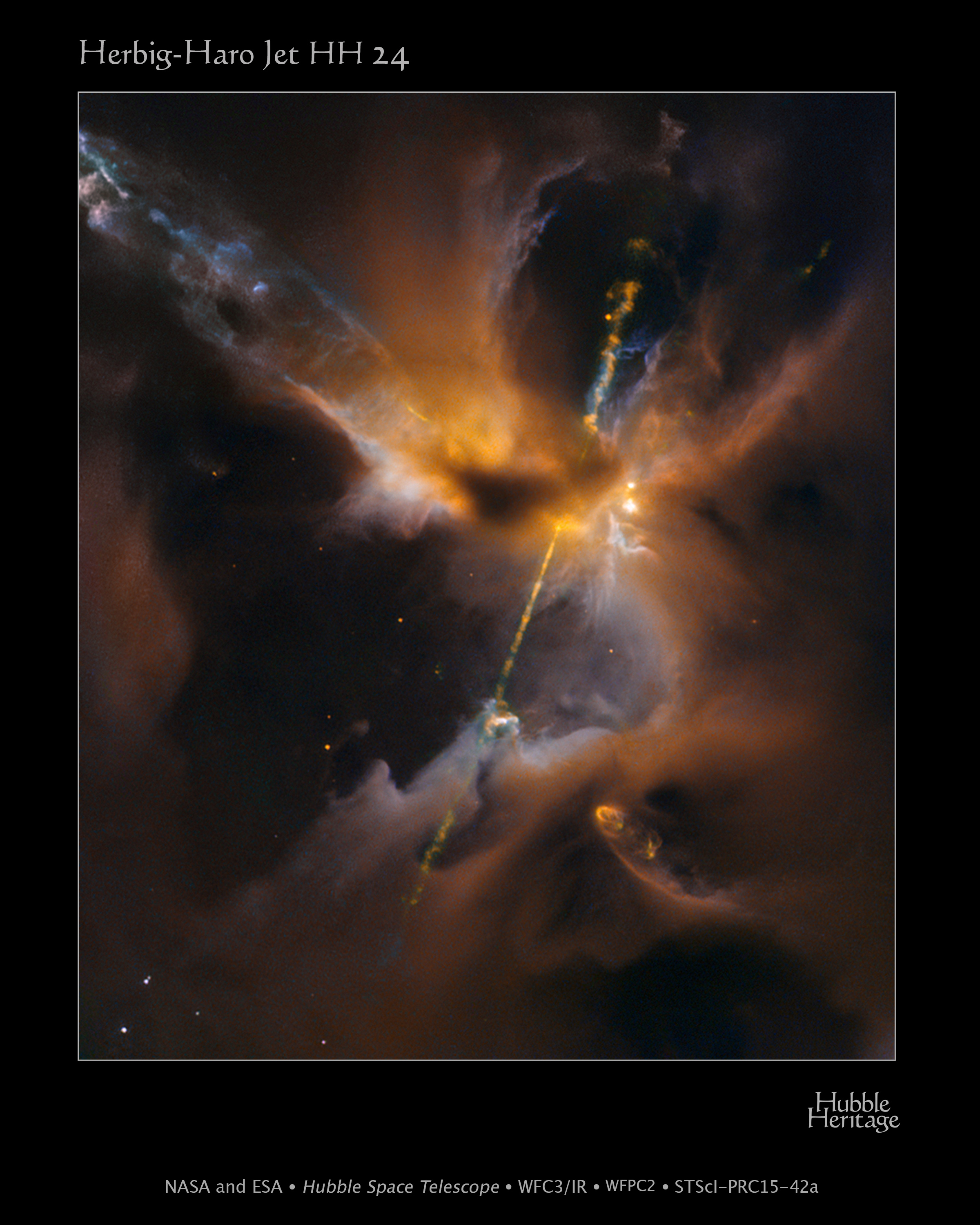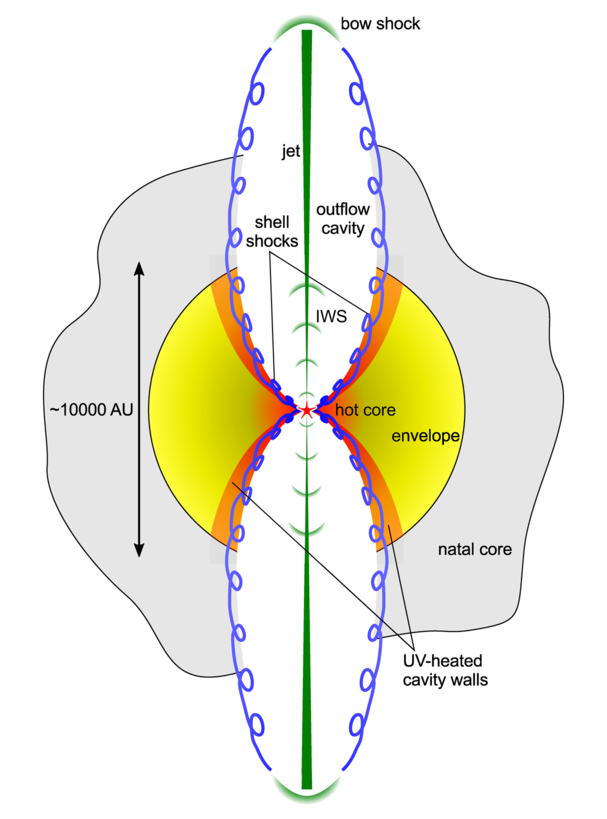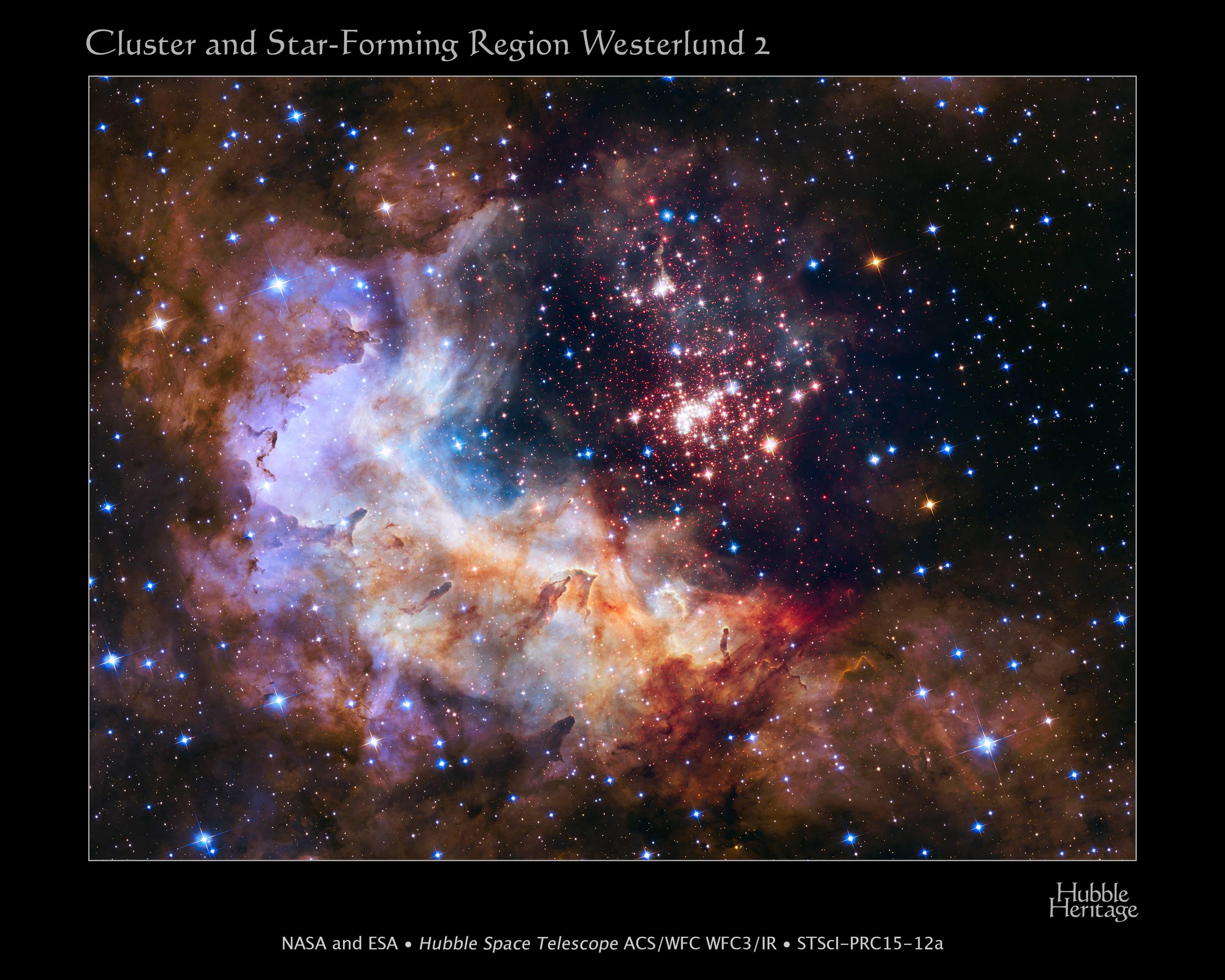Star Formation#
Introduction
Notes
To Do
Write the content, and send to Anita when happy
Colaboration
Star formation is not my expertise so if you want to help, feel free to comment the contribution you could make
Observation#
Spectral Energy Distribution#
[]: Hydrostatic, radiative equilibrium disk models, disks encased by thin layer of superheated dust grains, result: disks flare & absorb more stellar radiation than flat disks would, spectral features from dust grains in superheated layer appear in emission if disk is viewed nearly face-on.
Note
Looks like good introduction
‣ Ariane thread for star evolution #
‣ ‣ Black vs Grey body radiation #
A dusty envelope absorbs the stellar photons.
The dust grains re-emit thermal radiation (isotropically).
This dust emission is absorbed by other grains.
This process is reated until the photons escapes from the core.
Because the (radiative) energy is conserved, the temperature of the surface that the observer sees is much lower than that of the star and the characteristic wavelength longer (“redder”).
Note
Insert link toward SED teaching material from Hawai uni
Within dense core …
There is 2 parameters often used to describe the SED (Spectral Energy Distribution):
- Spectral index (class I, II, III)
- Bolometric temperature (class 0, I) However, SEDs are way too complex to be characterised by a single number and their characterisation are inevitably coarse
Step by Step#
Images
First stage of planet formation. Not detectable in the near infrared.
Cold core emit like a grey body
MStar < MCore
More Ressources:
Note
Extract picture from article below
Litterature
[]
Protostar begins to emerge and become detectable in the NIR (near Infrared).
Core is dispersing and punctuated by outflows
SED dominated by FIR
protostellar disk to protoplanetary disk in 104 years (ref 4 - 5)
This process involve high temperature but while material is accreted by the star the disk mass and temperature decrease.
MStar > MCore
Core has dissipated, the star has reached it’s final mass and is now contracting. The star is now a Pre-Main-Sequence (PMS - ie T Tauri Star or HerbigAe depending on it’s mass).
Infrared excess above photosphere, due to a protoplantary disks.
Litterature
Circumstellar disk has very little dust (optically thin) and little if any infrared excess.
SED looks like a stellar photosphere.
Litterature

